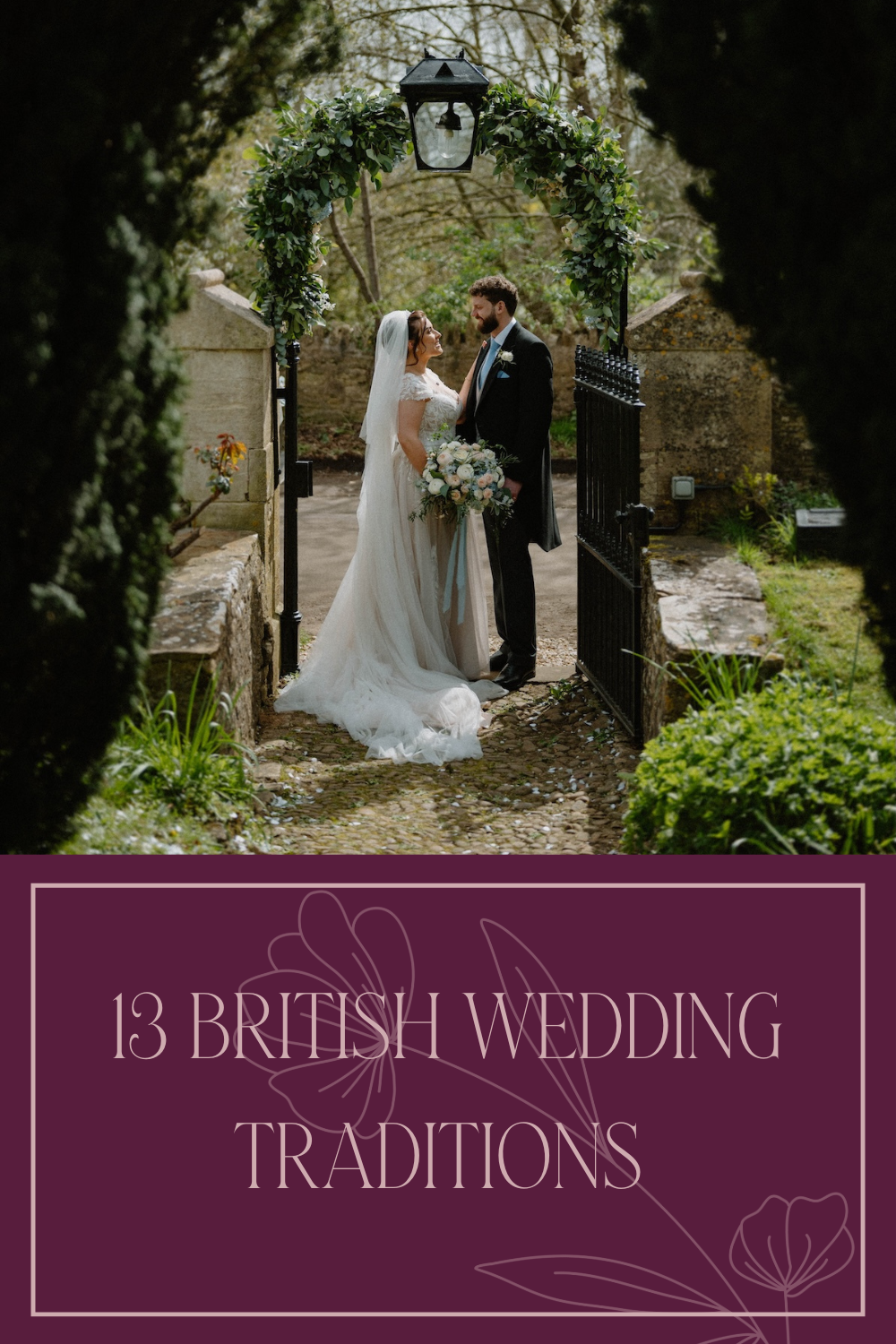Many couples across the UK are now wondering what British wedding traditions they should include in their celebrations, what they are, and, quite frankly, why we even do them?! While today’s weddings are often more personal and creative than ever, many couples still choose to weave in nods to British heritage, and many also just feel like it wouldn’t be a wedding without them!
Whether you’re a lover of all things classic or just curious about the origins of that silver sixpence in your shoe, this blog explores 13 (unlucky?!) of the best-known British wedding traditions, and how you might choose to honour them in a way that feels truly you.
1. Something Old, Something New…
“Something old, something new, something borrowed, something blue — and a silver sixpence in your shoe.” Perhaps the most iconic British wedding tradition of all, this rhyme dates back to the Victorian era and is all about bringing good luck to the bride.
- Something old represents continuity and the connection to your past, which often comes in the form of a family heirloom, a piece of lace from your mum’s dress perhaps, or vintage jewellery.
- Something new stands for optimism and the future, this could be your dress, veil or even your new initials!
- Something borrowed is usually from a happily married friend or relative, symbolising the passing on of good fortune.
- Something blue represents fidelity, purity, and love. Think a blue ribbon stitched inside your dress, a sapphire ring, or even blue shoes.
- A silver sixpence in your shoe (the lesser-known fifth line) was traditionally placed in the bride’s left shoe to bring prosperity and wealth. Some wedding shoes already have this built in!
Many modern couples, not just brides, are finding creative, personal ways to make this tradition their own, often incorporating heritage pieces with a modern twist. Some just completely forget to even include these things, and if it doesn’t mean much to you, then we say don’t worry!
2. Not Seeing Each Other Before the Ceremony
The tradition of the couple not seeing each other before the ceremony has its roots in arranged marriages, where it was considered bad luck for the groom to see the bride before the vows were made — just in case one of them got cold feet!
Today, many couples still embrace this custom as a way of preserving the anticipation and emotion of that first look at the aisle. But there’s also a growing trend towards first look photos which gives you a private moment before the ceremony begins, often captured beautifully and naturally by the photographer. This works well for couples who are really nervous about walking down the aisle and being the centre of attention. Through conversations with couples recently, I’ve had a few say they wish they had actually stayed with their other half the night before as they would have slept better! I personally stayed with my other half for our elopement before we legally wed, and it was so nice to have a nice chilled breakfast together in the morning before getting ready.
3. Confetti and the Ceremony Exit
Throwing confetti as the couple leaves the ceremony is a really nice moment to capture, plus it’s a deeply symbolic one! Originally, guests would throw rice, grain, or petals to wish fertility and prosperity. The word “confetti” actually comes from the Italian tradition of throwing sugared almonds at parades and celebrations.
In Britain, paper confetti became popular in the 19th century, and today, we see everything from dried rose petals and lavender to biodegradable paper circles, and even bubbles instead of confetti! We absolutely love the use of paper and it’s floats so nicely! Dried petals can be a nightmare to dig out of your dress and hair…
Top tip: Check your venue’s policy on confetti – many ask for biodegradable only, or may have designated areas where it can be used.
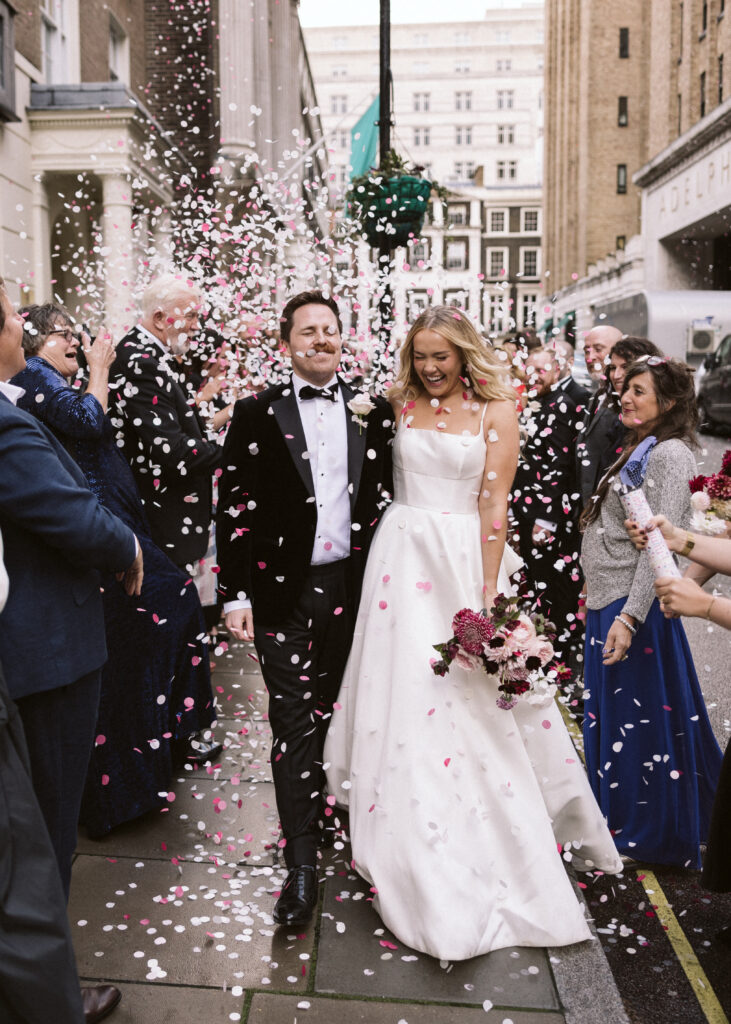
4. Wearing a Veil
Historically, the bridal veil symbolised modesty and purity, and in some cases, was used to ward off evil spirits. In arranged marriages, it also served a practical purpose – obscuring the bride’s face until the ceremony was complete!
Today, veils are entirely optional and often chosen as a style statement rather than a symbol. From cathedral-length showstoppers to simple tulle styles or even whimsical birdcage veils, they’re a beautiful way to add a touch of tradition while expressing personal style.
What is a the difference between a blusher veil and a drop veil?
A blush veil has the piece which can be moved to cover the face, and a drop veil is just for the back of the head, with no face covering. It’s quite rare now that people cover their faces with a veil.
Brides tend to keep their veil on during the ceremony and drinks reception, and remove it when seated for dinner, as you may find it annoying!
5. Walking Down the Aisle with Your Father
Traditionally, the bride is escorted down the aisle by her father and “given away” to the groom. A symbolic handover that stems from the time when women were seen as property to be passed between families.
It is still a very popular tradition for the bride to walk with her dad, but we have seen this altered on many occasions, such as walking down the aisle with both parents, a sibling, a close friend, or walking in together. Some even choose to walk in solo (like I did!).
I think it all comes down to your beliefs, and what you feel comfortable in doing. Every family has different relationships. My advice would be to stick with what you want to do.
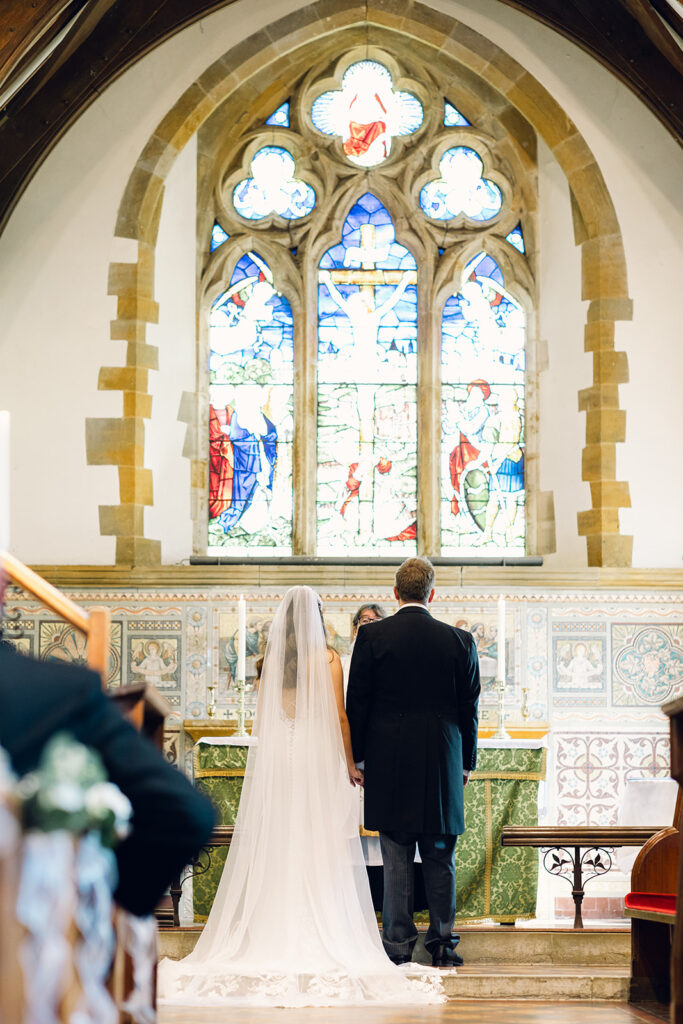
6. Wedding Breakfast
The term “wedding breakfast” often confuses guests, especially international ones! But the phrase doesn’t refer to the time of day; it simply means the couple’s first meal together after being married, so essentially, the wedding ‘dinner’!
Rooted in tradition, it symbolises breaking the fast after the wedding ceremony, particularly in religious services where the couple may have fasted beforehand. Today, the wedding breakfast is your reception meal — whether it’s a formal three-course menu, a relaxed sharing feast, or an alfresco BBQ, but we still seem to have adopted this title for the part of the day in the UK!
7. The Wedding Cake
British weddings have long featured a tiered cake, dating back to medieval times when guests would stack small buns on top of one another, and the couple would try to kiss over the pile without knocking it down (a sign of future prosperity! There seems to be a lot about properity and fertility in British traditions!).
The modern version, which was a multi-tiered fruitcake covered in white icing, became popular in the Victorian era. The tiers were said to represent wealth and status, with the top tier traditionally saved for the christening of the couple’s first child. The bigger the cake, the wealthier you were.
While few couples opt for fruitcake today, many couples do still opt for a wedding cake as part of their day, along with a cake cutting. We generally advise to display the cake on the dancefloor, cut it just before the first dance, and your caterer will whip it away for you to go straight into your first dance – saves you gathering all the guests twice! We generally do a little countdown into you doing the cut, then ask you to share your first slice of cake together which always makes for a fun photo!
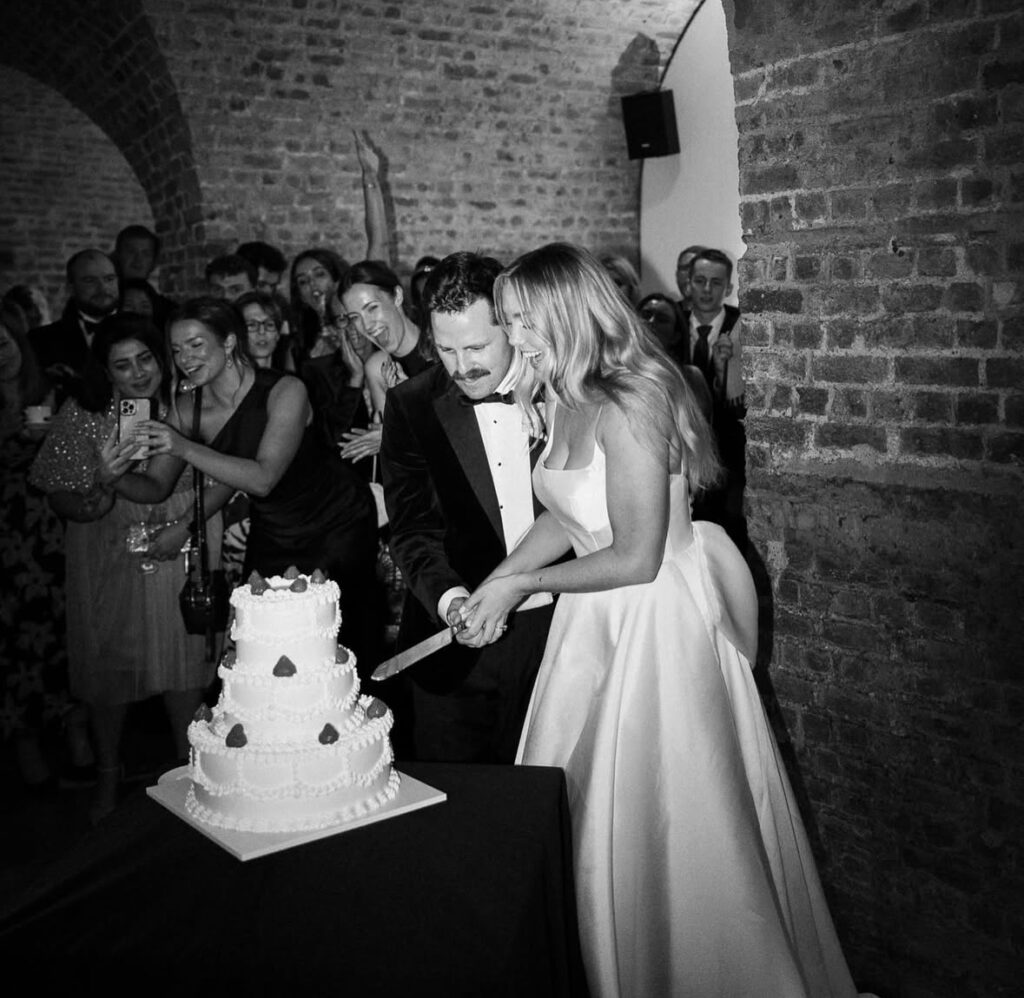
8. Speeches and Toasts
British wedding speeches are a tradition in themselves. Full of humour, heartfelt sentiment, and occasionally, a few nerves and dodgy stories! The traditional order is:
- Father of the bride
- Groom
- Best man
But many couples now choose a more inclusive line-up (not just all men!) with speeches from the bride, maid of honour, or even a joint thank-you speech from the couple. It’s a lovely way to personalise the day and include more voices.
We would advise to still try and keep to just 3 or 4 speeches, and ask your speakers to have a time cap of 5 minutes. It’s plenty of time for a speech, as you really don’t want to go on too long!
9. First Dance
The first dance as a married couple is a romantic finale to the formal part of the day, marking the start of the partaaaay! Traditionally, the couple take to the floor alone, before being joined by parents, wedding party, and guests.
Whether it’s a carefully choreographed number or a relaxed sway to your favourite song, it’s a chance to pause, connect, and soak in the magic of the moment, and also makes for some lovely photos!
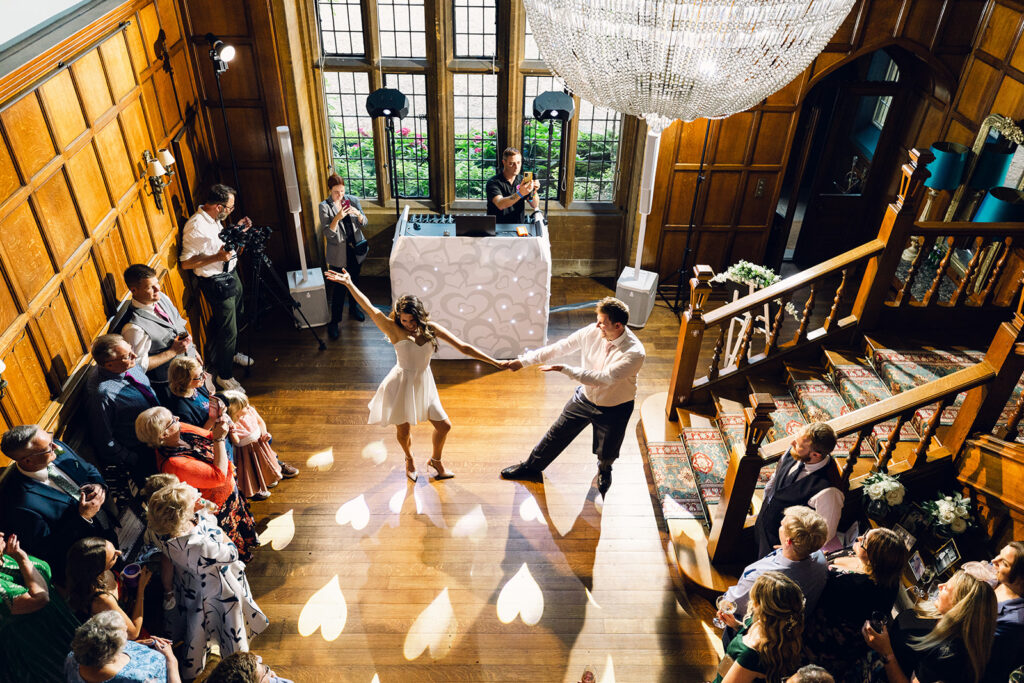
10. The Bouquet Toss
One of the most playful wedding traditions, the bouquet toss, dates back to Victorian times. Back then, it was considered lucky to touch the bride, so guests would sometimes rush at her to snag a piece of her dress or flowers for good fortune. To escape the crowd, especially for ladies, when strangers would try and get in on this tradition, brides began tossing their bouquets into the air as a distraction, and the tradition stuck! Today, it’s quite rare we see this. Many bride’s want to keep their bouquet or have it preserved, but it can be a fun moment, especially for that superstitious friend waiting to get engaged, often with lots of laughter and a little friendly competition!
11. Carrying the Bride Over the Threshold
This tradition is steeped in superstition and symbolism. In Roman times, it was believed that evil spirits lurked at the threshold of a new home and could enter through the soles of the bride’s feet. Carrying her over the threshold was a way to protect her and begin married life with good fortune. Today, it’s more of a romantic gesture!
12. The White Wedding Dress
Thanks to Queen Victoria, white wedding dresses became the ultimate symbol of bridal fashion. When she married Prince Albert in 1840 wearing a white gown (a bold move at the time), she set a trend that still dominates today. While white is often associated with purity, it originally represented wealth and status, as white fabric was expensive and difficult to maintain, so only the rich wore white. These days, it’s simply the classic bridal look—but modern couples are increasingly choosing soft pastels, bold colours, or even black for a personalised twist.
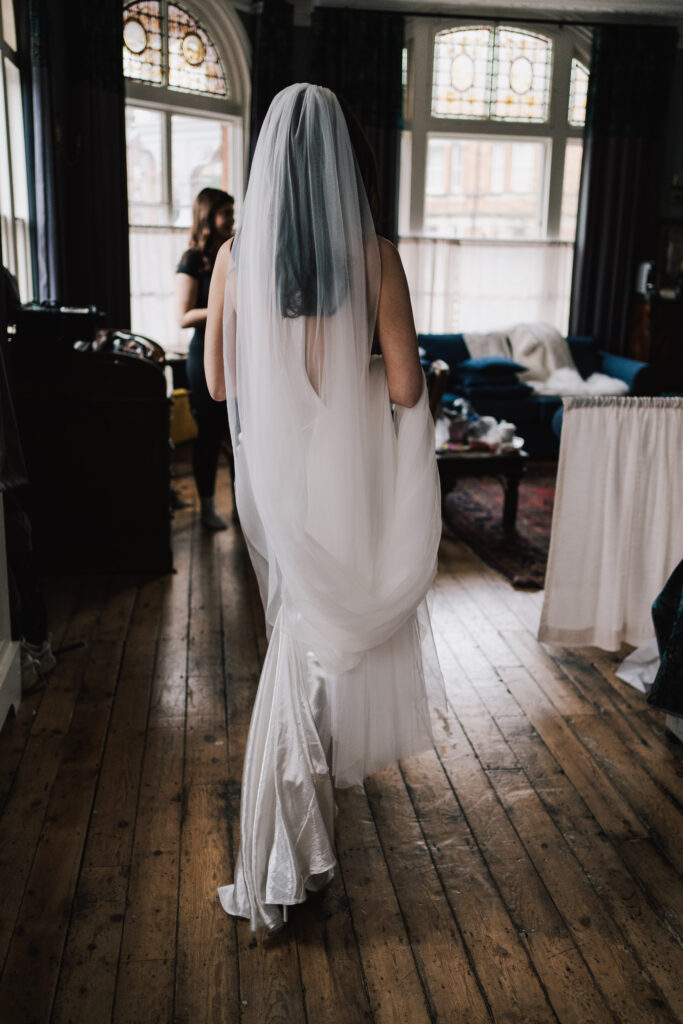
13. Exchanging Rings
This ancient tradition goes back thousands of years to the Egyptians, who believed a circular band symbolised eternity. The idea of placing it on the fourth finger of the left hand, now known as the “ring finger”, came from the belief that a vein (the vena amoris) ran directly from that finger to the heart. Today, wedding rings remain one of the most recognisable and meaningful symbols of being married, and is one that we see most from modern couples.
Honouring Tradition, Your Way
British wedding traditions offer a sense of charm, history, and ritual that many couples treasure, but the beauty of modern weddings lies in your freedom to pick and choose. Whether you embrace every tradition or just one or two that feel meaningful, it’s all about creating a day that reflects who you are as a couple, and what resonates most with you. If you aren’t going to enjoy a confetti shot, or a first dance, then don’t do them!
And if you ever need help weaving tradition into a modern wedding with elegance and intention, we’re always here to guide you! You can get in touch here.
Interested in seeing what we do? Then head over and follow us on Instagram, where we keep you in the loop of what’s happening this wedding season.

